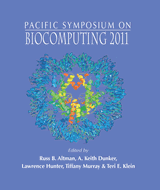An Application and Empirical Comparison of Statistical Analysis Methods for Associating Rare Variants to a Complex Phenotype
Vikas Bansal1, Ondrej Libiger1, Ali Torkamani1, Nicholas J. Schork2
1The Scripps Translational Science Institute (VB, OL, AT) and Department of Molecular and Experimental Medicine, The Scripps Research Institute (AT); 3344 North Torrey Pines Court, Suite 300, La Jolla, CA 92037 USA;
2The Scripps Translational Science Institute and Department of Molecular and Experimental Medicine, The Scripps Research Institute; 3344 North Torrey Pines Court, Suite 300, La Jolla, CA 92037 USA;
Email: vbansal@scripps.edu; olibiger@scripps.edu; atorkama@scripps.edu;nschork@scripps.edu;
Pacific Symposium On Biocomputing 16:76-87(2011)

Abstract
The contribution of collections of rare sequence variations (or ‘variants’) to phenotypic expression has begun to receive considerable attention within the biomedical research community. However, the best way to capture the effects of rare variants in relevant statistical analysis models is an open question. In this paper we describe the application of a number of statistical methods for testing associations between rare variants in two genes to obesity. We consider the relative merits of the different methods as well as important implementation details, such as the leveraging of genomic annotations and determining p-values.
[Full-Text PDF] [PSB Home Page]